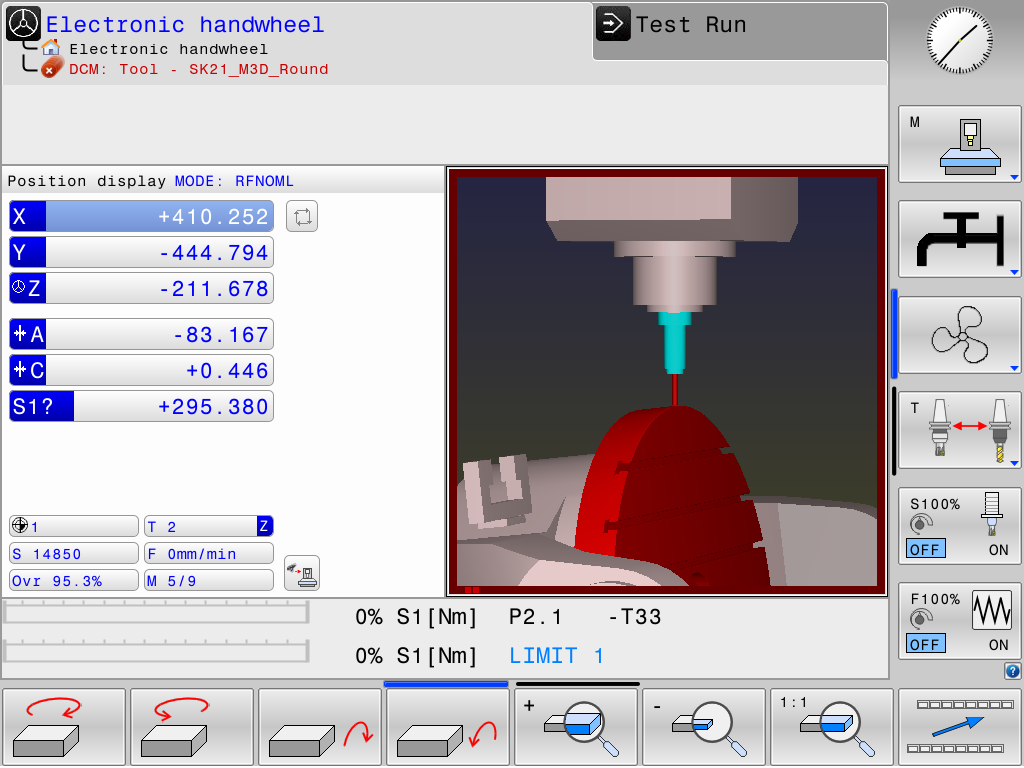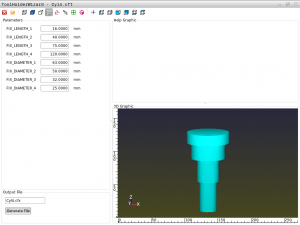As 5-axis machine sales continue to increase in today’s manufacturing industry, the need for advanced control technology that assists with the adaptation of these machines increases as well. As anyone who has ever programmed and cautiously stepped through a newly created process on a 5-axis CNC machine will tell you…IT IS NERVE-RACKING. The possibility of collisions between the machine, the tooling, fixturing, and the workpiece keeps the operator nervous and on their toes for as long as it takes to get through that first part. Depending on the level of complexity, this can sometimes feel overwhelming. An advanced control technology that can help ease the stress is definitely needed. That is where Dynamic Collision Monitoring (DCM) comes in.
Dynamic Collison Monitoring is a Heidenhain control option that uses actual machine kinematics and tooling models to provide protection against machine components and tooling interferences. If a collision is detected by the control, all machine motion is stopped, an error message is displayed, and the kinematics screen highlights the components involved in the predicted collision in red. This protection is active in both auto and manual modes of machine operation, and the monitoring is constant and in “real-time.”
To provide more flexibility and protection, custom tool holder shapes can be added to the machine kinematics model for additional collision monitoring. Once these tooling models are added, they can easily be adjusted to fit almost any shape and size through data fields right on the control. Solid models from tooling manufacturers can also be used to create additional templates for unique shapes if required.
Although there are third party software systems that offer some type of collision detection and support, they are still external, offline systems that lack the ability to monitor the actual machine workspace and movements executed during automatic operation and manual jogging of the machine tool. Additionally, third-party software systems can’t adapt to real-time adjustments and changes made at the machine itself. This type of continuous, real-time, protection requires on-board feature capabilities that are built into the control software itself.
Also, through the use of limits and parameters within their 5-axis programming modules, as well as through the use of graphical interfacing, CAD/CAM software packages can also offer some preventative detection and protection against the cutting tool, tool holder, part, and fixture collisions during simulation, and within the actual G-code of the NC part program itself; however, these CAD/CAM systems are also external pieces of the puzzle, which means they lack the ability to provide any real-time assurances against machine component collisions during automatic and manual operations of the machine and real-time monitoring of the process after the NC program has been created. Once again, we find the need for a solution that is built into the control itself to keep both the machine and the machining process collision-free. Dynamic Collision Monitoring is that solution.
Dynamic Collision Monitoring is standard on all Takumi 5-axis machines. The machine kinematics model – as well as assistance in creating, editing, and loading necessary tooling models – is provided by Takumi. This powerful Collison monitoring technology, coupled with the ongoing support provided by Takumi USA, provides both the operator and the shop owner peace of mind to successfully overcome the onset of that nerve-racking feeling when you run through that first part of the newly created 5-axis CNC process and to know their new 5-axis CNC machine is protected from collisions.


